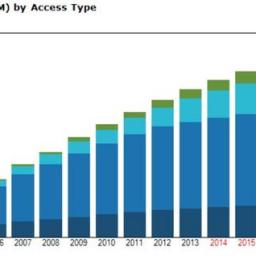New G.fast standard offers gigabit DSL over short distances
 At the Broadband World Forum in Amsterdam this week, several companies are announcing and demonstrating products that bring DSL -- or digital subscriber line -- into a future with a speed of 1 gigabit per second. That's about 1,000 times the data-transfer speed the technology offered when it arrived in the late 1990s. The DSL upgrade comes through a new technology called G.fast. The technology should arrive in homes starting in 2016.
At the Broadband World Forum in Amsterdam this week, several companies are announcing and demonstrating products that bring DSL -- or digital subscriber line -- into a future with a speed of 1 gigabit per second. That's about 1,000 times the data-transfer speed the technology offered when it arrived in the late 1990s. The DSL upgrade comes through a new technology called G.fast. The technology should arrive in homes starting in 2016.Much of the world doesn't have cable-TV infrastructure at all, and still less of it has fiber-optic connections. Phone networks, though, are widely used, and covered about 422 million DSL subscribers globally in 2013, according to analyst firm IHS. That should rise to 480 million by 2018. But reflecting the competitive threat to DSL equipment makers, fiber optic links are expected to spread much more rapidly -- from 113 million in 2013 to 200 million in 2018. European customers are likely to favor G.fast in particular, Triductor CEO Tan Yaolong said. That's because labor costs are very high in that region, which discourages extensive renovation projects.
To meet its full gigabit-per-second potential, G.fast connections will require broadband providers to use network equipment close to the customers' buildings -- 50 meters (about 160 feet) or less. A 200-meter distance will still be good enough for about 600Mbps. That's why broadband providers have been placing their network gear closer to homes -- often in boxes under sidewalks, in cabinets by roads, or boxes attached to telephone poles. That's also why it's so expensive to upgrade broadband networks: the ISPs have had to extend their networks to bring that network gear closer to their customers.
I'm not hopeful that reason will prevail in the United States where better internet infrastructure is concerned. Sure would like a nice, zippy connection though. Maybe I should move to S. Korea.